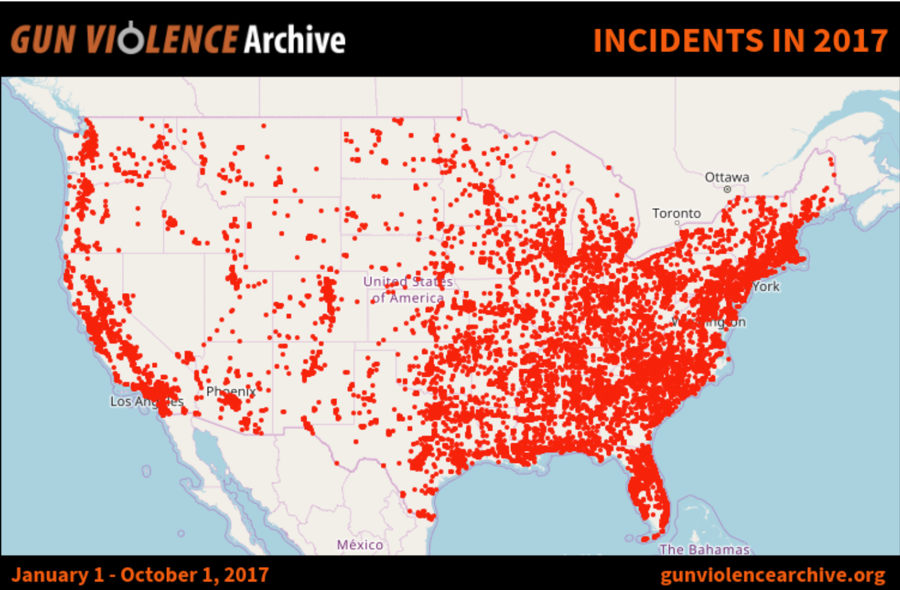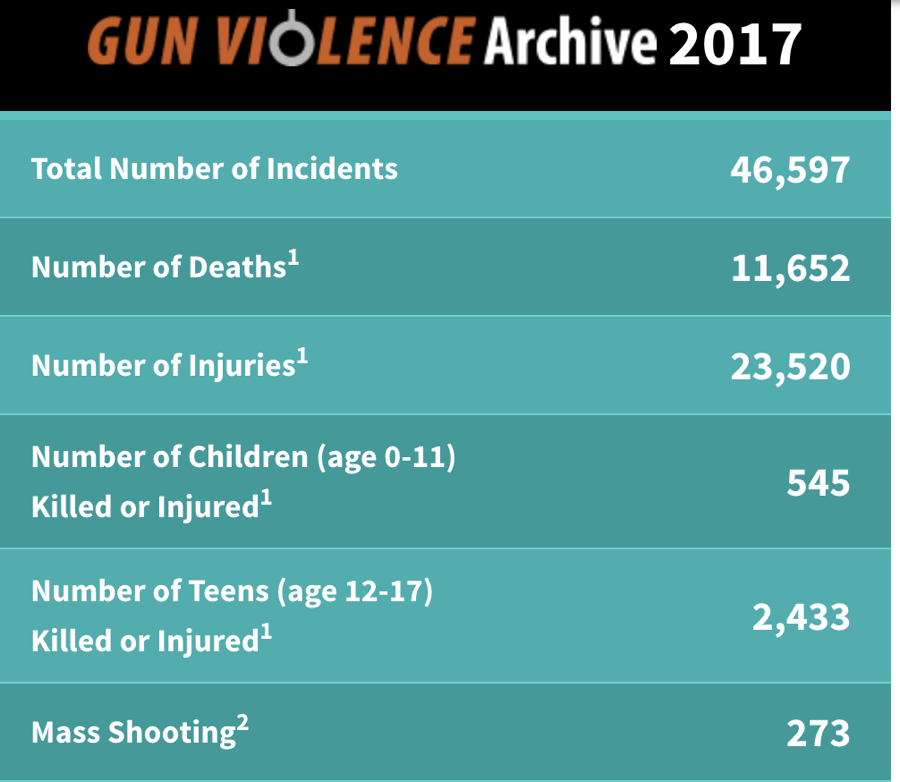The most difficult task that journalists and journalism educators face in the days ahead may be to recognize their own biases about guns and challenge their notions with facts.
In the days ahead, politicians and the groups that sway them will stake their ground for and against stronger gun control laws. They will argue for and against Second Amendment freedoms and for and against stronger registration laws. But they won’t touch the complexities that lie beneath the surface including mental illness.
I train journalists around the country how to cover issues involving guns, ammunition and gun violence. I have taken hundreds of journalists to gun ranges to allow them to fire weapons and learn how guns work. I am not a gun advocate. I am a journalism advocate. And, I am no longer surprised to learn how little journalists know about this subject that they cover so often.
USA Today estimated there is a mass killing about every two weeks in the U.S. Most are not public events like the shooting in Las Vegas. Most are domestic killings or violence in the workplace. Most victims know their killer and – despite what family members and neighbors tell reporters in the hours after a shooting – most mass killers leave a long trail of clues prior to the shooting.
Mass killings attract blanket coverage from media, as they should. But mass killings like the one unfolding in Las Vegas represent a fraction of the annual death toll in the United States. Look at this map, updated constantly by Gunviolence.org, a non-profit group that has been tracking gun deaths for years. This is the map as of mid-afternoon Monday, Oct. 1.


Avoid simple solutions
There is no single solution to stemming gun deaths in America. Some gun violence is linked to mental illness, but the mentally ill are far more likely to be victims of crime.
Researcher Heather Stuart wrote that the public commonly consumes a media diet that includes the narrative of the crazed killer who snaps. She writes, “These experiences are mostly vicarious, through movie depictions of crazed killers or real life dramas played out with disturbing frequency on the nightly news. Indeed, the global reach of news ensures that the viewing public will have a steady diet of real-life violence linked to mental illness. The public most fears violence that is random, senseless, and unpredictable and they associate this with mental illness. Indeed, they are more reassured to know that someone was stabbed to death in a robbery, than stabbed to death by a psychotic man.”
In fact, the widely cited MacArthur Violent Risk Assessment study found, “the prevalence of violence among those with a major mental disorder who did not abuse substances was indistinguishable from their non-substance abusing neighborhood controls. A concurrent substance abuse disorder doubled the risk of violence. Those with schizophrenia had the lowest occurrence of violence over the course of the year (14.8%), compared to those with a bipolar disorder (22.0%) or major depression (28.5%).”
Even more disturbing than the familiar relationship between killer and victim, even more disturbing the trends in demographics of the killer, even more disturbing than the trail of clues criminals leave about their growing violent tendencies, the people around the killer ignore or fail to recognize the issues.
The Los Angeles Times reported late Monday that the Las Vegas shooter Stephen Paddock had a family link to violent crime. His father was, for a time, on the FBI’s Most Wanted list for bank robbery. While it is an interesting factoid, it may or may not have any relationship to this mass shooting. The same is true for Paddock’s penchant for gambling. Police say he frequented Vegas casinos playing $100-a-hand poker. The details fill out his biography without supplying any clarity about a motive for the shooting.
Get it Right
For journalists and educators to find a respected voice in the current conversation, they have to sound as if they know what they are talking about. The first clue that you are clueless is when you interchange the phrases automatic and semi-automatic in describing weapons. In this Las Vegas case, the difference is magnified because it may turn out that the shooter was firing a fully automatic rifle. If so, it would be highly unusual. Most killers use semi-automatic weapons which are far less difficult to buy and do not require special licensing and permitting as fully auto machines do.
Some experts speculate that the Vegas shooter may have been using a “trigger crank,” which is an attachment that a shooter could use on a legal AR-15 semi-automatic rifle that would allow a shooter to fire more rapidly. If that is true, no doubt a movement to ban such devices, which are already rarely used, will gather. That is the sort of “quick solution” that will make headlines and do next to nothing to lower the murder rate.
Journalists should be literate about calibers. The caliber measures the bullet at the base. The bullet is the projectile that comes out the barrel of the weapon. The casing is the brass device that ejects from the weapon when a weapon fires a round. I heard a CNN reporter say Vegas police were documenting the casings on the ground, when I suppose what he meant was bullet fragments on the ground. The casings would all be inside the hotel room a long way away.
In another instance, I heard one “expert” tell a cable news anchor that the police will begin tracking the history of the weapons that authorities found in that hotel room. He made it sound like it would be as easy as tracking a car license. It isn’t. There is no national gun database. That is by design. What there is is a huge warehouse complex full of paper records. As Business Insider explained it is easier to track a bag of infected lettuce than it is to track a gun in America.
Congress set up the toothless lion known as the Federal Firearms License System that applies to retail gun sellers but not to private sellers. And the retailers hold on to the sales records, not send them to a central database.
The rush to legislate
Within hours of the shooting, everyone from celebrities to lawmakers were calling for new restrictions on gun ownership. Sen. Chris Murphy of Connecticut demanded that Congress “Get off its ass and do something.”
But if this case mirrors past incidents, including the Pulse nightclub shooting in Orlando, the American response will be to buy more guns. Gun sales skyrocketed before the 2016 election and since Trump was elected, the sales slowed down after he assured the public he would protect their gun ownership rights.
Gun ownership is a constitutionally protected right in the United States. The Supreme Court has spoken to this issue many times and never flinched in its leaning. The Court has said Second Amendment rights, like First Amendment rights, may be reasonably restricted. But, Americans disagree on what is reasonable. The foundational belief that gun ownership is a basic right was underscored Monday when, stock prices for companies that make guns rose sharply hours after the shooting in Las Vegas as investors anticipated a public call for gun restrictions, which historically means a hike in gun sales.
